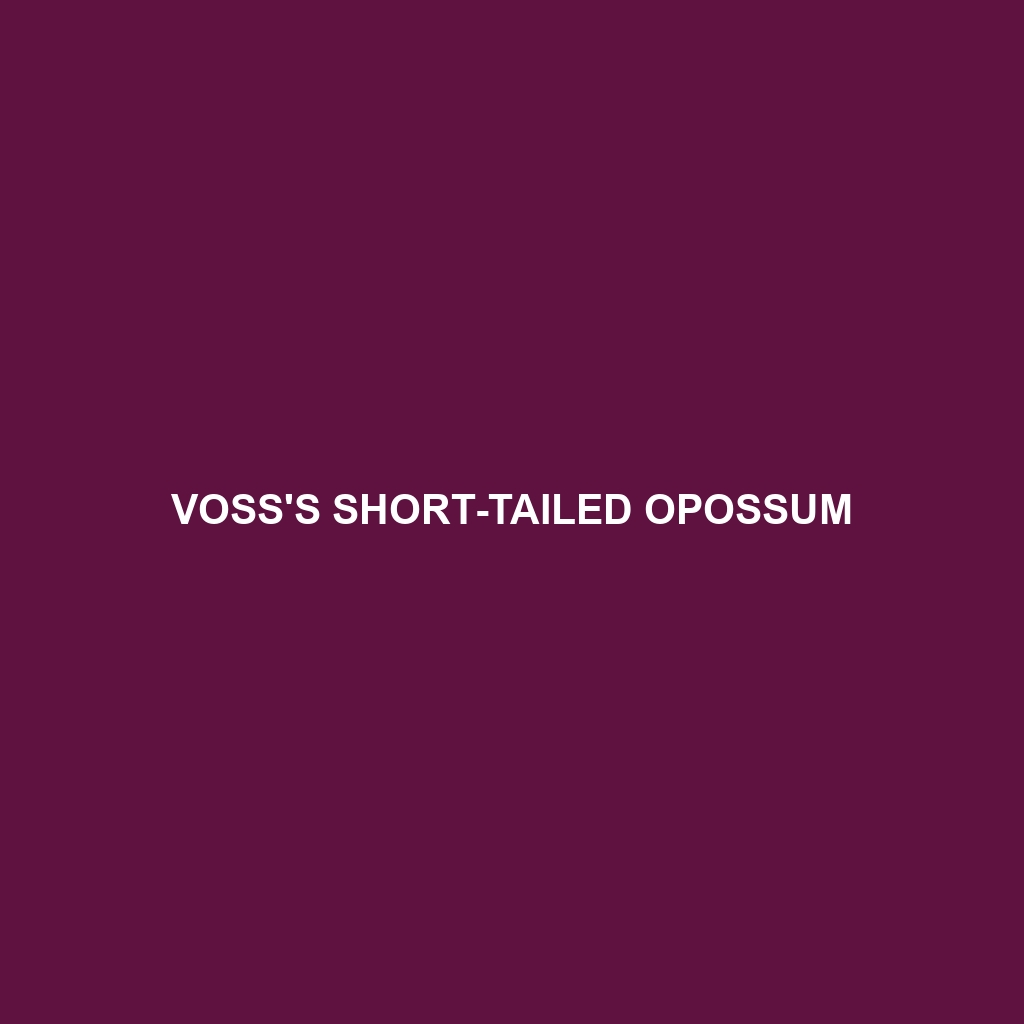Voss’s Short-tailed Opossum (Monodelphis vossi)
Voss’s Short-tailed Opossum, scientifically known as *Monodelphis vossi*, is a small, nocturnal marsupial native to South America. Primarily found in forested regions, this diminutive creature is notable for its lack of a pouch, which sets it apart from many other marsupials. Despite its small size, *Monodelphis vossi* plays a significant role in its ecosystem, contributing to insect population control and seed dispersal.
Physical Characteristics
Size: Adult Voss’s Short-tailed Opossums typically measure between 9 to 14 centimeters in body length, with an additional tail length of about 3 to 6 centimeters. They tend to weigh between 25 to 50 grams.
Coloration: Their fur is generally a mix of grayish-brown tones on the back, with a lighter, almost creamy underbelly. They may exhibit subtle striping or spots depending on the individual.
Special Features: As their name suggests, they have relatively short tails compared to other opossum species. Their tails are partially prehensile, aiding in balance and minor manipulation of objects. They possess sharp claws and a pointed snout, well-adapted for their insectivorous diet.
Behaviors
Social Interactions: Voss’s Short-tailed Opossum is largely a solitary animal. Interaction with other individuals usually occurs only during the mating season. They are known to be territorial and can exhibit aggressive behaviors if their space is encroached upon.
Feeding Habits: These opossums are omnivorous, with a diet primarily consisting of insects, small vertebrates, fruits, and seeds. They are adept hunters, using their acute sense of smell to locate prey.
Ecological Roles: They help control insect populations and are important seed dispersers, aiding in plant propagation within their habitats. Their role as both predator and prey maintains the ecological balance within their ecosystem.
Habitats
Natural Habitat: Voss’s Short-tailed Opossums are typically found in tropical and subtropical forests, often in areas with dense undergrowth. They are also known to inhabit grasslands and savannas adjacent to forested regions.
Adaptations: They have adapted well to a ground-dwelling lifestyle, with strong limbs and claws for digging and foraging. Their nocturnal nature helps them avoid many predators and exploit nighttime food resources.
Conservation Status
Current Status: The conservation status of Voss’s Short-tailed Opossum is currently listed as “Least Concern” by the International Union for Conservation of Nature (IUCN). However, habitat destruction and fragmentation pose potential threats to their populations.
Conservation Efforts: Efforts to preserve their habitat through protected areas and sustainable land-use practices are crucial for their continued survival. Monitoring populations and studying their ecological impact are ongoing areas of research.
Fun Facts
Reproduction: Unlike many marsupials, Voss’s Short-tailed Opossum does not have a pouch. Instead, the young cling to their mother’s teats until they are sufficiently developed to survive outside.
Name Origin: The species is named after the renowned American mammalogist, Dr. Robert Voss, in recognition of his contributions to the study of neotropical mammals.
Lifespan: In the wild, they typically live for about 1 to 2 years, though they can live slightly longer in captivity under optimal care.
By showcasing these fascinating details about Voss’s Short-tailed Opossum, your website can provide a comprehensive and engaging resource for visitors interested in learning more about this unique and important species.
